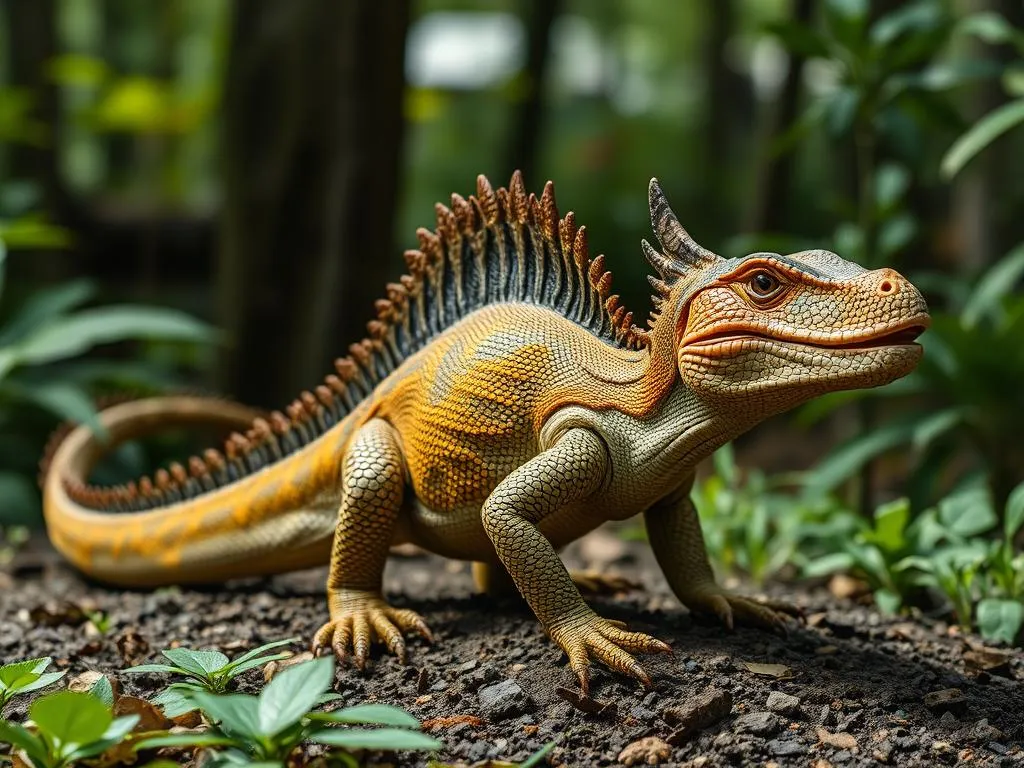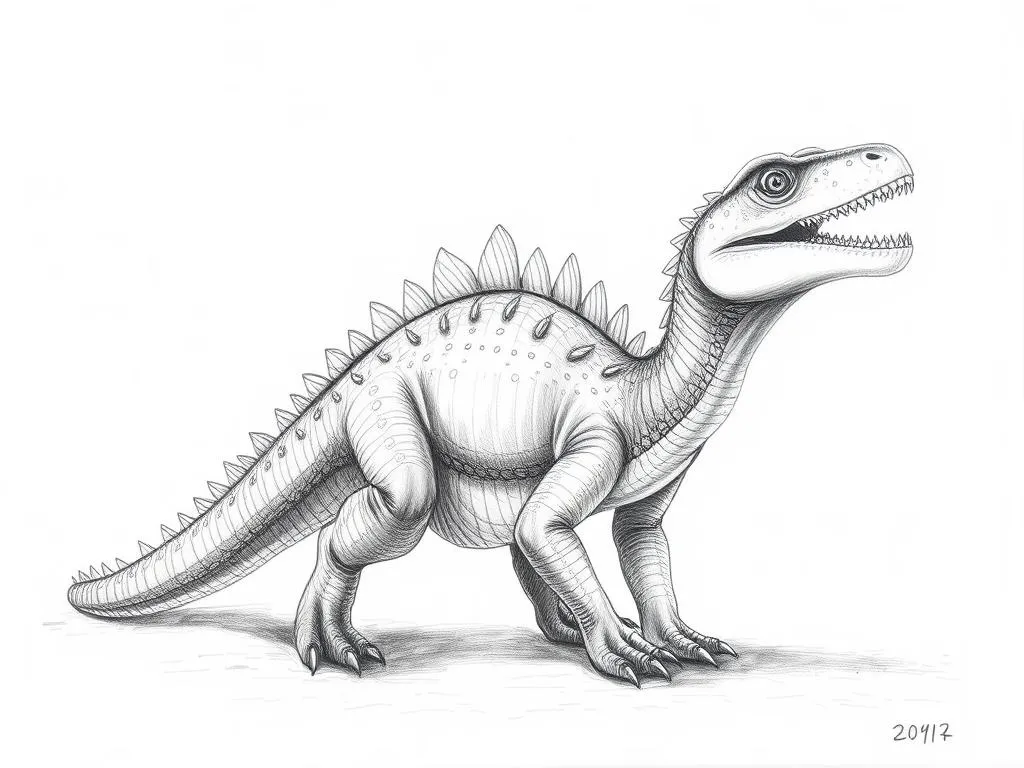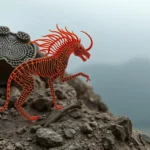The Symbolism and Spiritual Significance of Phytosaurs

Disclaimer: Some images on this website are AI-generated artworks and may not accurately represent real animals.
Understanding the symbolism and meaning of phytosaurs can provide insights into our own lives and spiritual journeys. These fascinating prehistoric creatures, often overshadowed by dinosaurs, hold a unique place in the annals of Earth’s history and human imagination. In this exploration, we will delve into the characteristics of phytosaurs, their roles in ancient ecosystems, and the profound meanings attributed to them across various cultures and spiritual practices.
Understanding Phytosaurs
Overview of Phytosaurs
Phytosaurs were ancient reptiles that roamed the Earth during the Late Triassic period, approximately 230 to 200 million years ago. Although they share some similarities with modern crocodiles, phytosaurs represent a distinct group of archosaurs.
| Physical Characteristics | Description |
|---|---|
| Size | Up to 30 feet long |
| Body Shape | Long, narrow snouts; robust bodies |
| Limbs | Shorter limbs; adapted for swimming |
| Teeth | Conical teeth suited for a carnivorous diet |
| Skin | Scaly, often thought to be similar to modern reptiles |
The habitat of phytosaurs varied, but they were primarily found in freshwater environments, including rivers, lakes, and swamps. Their historical context situates them in a time when the Earth was undergoing significant geological and climatic changes. Unlike modern reptiles, phytosaurs had unique adaptations that allowed them to thrive in both aquatic and terrestrial settings, showcasing their evolutionary significance.
Phytosaurs in the Ecosystem
Phytosaurs played a critical role in prehistoric ecosystems. As apex predators, they influenced the dynamics of their habitats. Their predatory habits included ambushing smaller animals and scavenging when necessary. This adaptability made them formidable hunters of their time.
Their diet primarily consisted of fish and other small vertebrates, which they captured using their specialized teeth. Additionally, their interactions with other species were complex, as they competed with other reptiles and coexisted with early dinosaurs. This dynamic ecosystem illustrates the intricate balance of life during the Late Triassic and sets the stage for understanding the symbolism these creatures embody.

Symbolism & Spiritual Meaning
Ancient Cultures and Phytosaurs
Phytosaurs, though not as prominently featured as dinosaurs in mythology, have still found representation in various ancient cultures. In some indigenous beliefs, large reptiles were seen as symbols of strength and protection. Although specific references to phytosaurs may be scarce, their relatives, such as crocodiles, often held significant symbolic meanings.
For example, in ancient Egyptian mythology, the crocodile was associated with the god Sobek, who represented fertility, protection, and the Nile’s life-giving waters. This connection between powerful reptiles and mythological narratives illustrates how ancient civilizations attributed deep meanings to these creatures.
Spiritual Attributes
The spiritual attributes of phytosaurs encompass several key themes:
-
Strength and Resilience: As apex predators, phytosaurs symbolize the power and resilience needed to thrive in challenging environments. Their ability to adapt to changing ecosystems resonates with individuals seeking strength in their personal lives.
-
Adaptability and Survival Instincts: The evolutionary journey of phytosaurs reflects a deep adaptability—an essential quality for survival. This aspect encourages individuals to embrace change and navigate life’s uncertainties.
-
Connection to Water and Earth Elements: Phytosaurs, primarily aquatic, embody the elemental energies of water and earth. Water symbolizes emotion, intuition, and the unconscious, while earth represents stability and grounding. Together, these elements highlight the importance of balance in life.
Phytosaurs in Dreams
Common Themes
Dreaming of a phytosaur can elicit various emotional responses, often tied to personal experiences and subconscious thoughts. Common themes associated with these dreams include:
-
Fear: A phytosaur in a dream may represent looming challenges or fears in waking life, symbolizing an overwhelming situation or emotion.
-
Admiration: Alternatively, dreaming of a phytosaur can evoke feelings of admiration for its strength and resilience, suggesting a desire to embody these qualities.
| Dream Scenario | Interpretation |
|---|---|
| Encountering a phytosaur | Facing a formidable challenge |
| Swimming with a phytosaur | Embracing emotions and intuition |
| Being chased by a phytosaur | Feeling overwhelmed by fears or responsibilities |
| Observing a phytosaur from a distance | Gaining perspective on a situation |
Emotional and Psychological Implications
The emotional and psychological implications of phytosaur dreams can be profound. For instance, feeling fear during a phytosaur dream may indicate unresolved issues that need addressing. It serves as a prompt for introspection and personal growth.
On the other hand, feelings of admiration or empowerment can signify a positive transformation or acknowledgment of one’s strengths. In this way, phytosaur dreams reflect personal challenges or transformations, serving as a mirror to our subconscious thoughts and feelings.
Modern Interpretations
Phytosaurs in Popular Culture
In contemporary society, phytosaurs have found their way into various aspects of popular culture. They are often depicted in media, literature, and art, sometimes as fearsome creatures and other times as symbols of ancient wisdom.
Films and documentaries about prehistoric life frequently highlight phytosaurs, emphasizing their unique adaptations and roles in the ecosystem. Such portrayals contribute to a greater appreciation of these creatures and their symbolism in human culture.
Contemporary Spiritual Practices
The integration of phytosaurs into modern spiritual practices has also emerged. Many people view these ancient reptiles as spirit animals, representing strength and adaptability in the face of challenges.
In meditation and visualization practices, invoking the energy of a phytosaur can inspire individuals to tap into their inner resilience and embrace change. This contemporary understanding allows individuals to connect with the attributes of phytosaurs in meaningful ways, fostering personal growth and self-awareness.
Key Takeaways
The exploration of phytosaurs symbolism reveals several valuable insights:
- Phytosaurs symbolize strength, resilience, and adaptability in challenging environments.
- Ancient cultures attributed significant meanings to reptiles, often associating them with protection and fertility.
- Dreams involving phytosaurs can reflect personal challenges, fears, or transformative journeys.
- Modern interpretations of phytosaurs in popular culture and spiritual practices highlight their enduring relevance and the lessons they offer.
Conclusion
Recognizing the symbolic meanings of prehistoric creatures like phytosaurs enriches our understanding of both our past and present. By exploring their attributes and the lessons they impart, we can deepen our personal growth and cultivate a greater awareness of the natural world.
As we navigate the complexities of modern life, reflecting on our connections with phytosaurs can inspire us to embrace our strengths and adapt to change. Their legacy serves as a reminder of the resilience inherent in nature and within ourselves, encouraging a journey of exploration and self-discovery.







